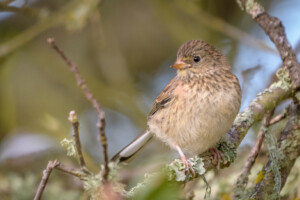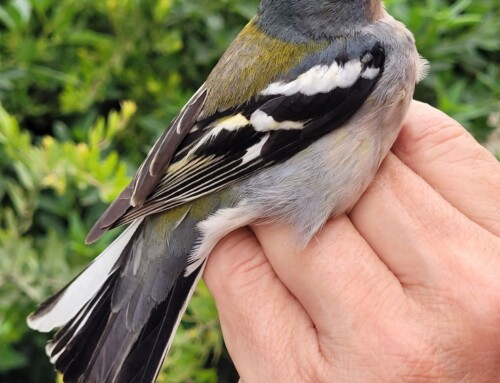
LINKED PAPER
Post-fledging spatial dispersion and movement behaviour differs between cavity-nesting and open-cup nesting passerines. Şahin Arslan, N., & Martin, T. E. 2022. IBIS. DOI: 10.1111/ibi.13027. VIEW
Life is full of trade-offs. For every beneficial choice, there is a potential drawback. This balancing act of choices begins early in life. When young birds leave the nest, they are faced with a difficult dilemma: do they stick together or explore the world on their own? Staying close to your siblings has several benefits, such as reduced predation risk (more eyes can spot predators more quickly, Treves 2000) and higher chances of finding food (Ward & Zahavi 1973). There are, however, some drawbacks to grouping together. If a predator does manage to detect you, the whole group could be eaten (McLaughlin & Montgomerie 1985). And remaining together in one place can result in food depletion and starvation (Bonal & Aparicio 2008). Clearly, there is no simple solution to this dilemma.
Six species
The choices described above – staying together versus venturing on your own – assumed that all birds were equally mobile. This is obviously not the case. The differences in mobility are especially apparent when comparing cavity-nesting species and open-cup-nesting species. Offspring that grow up in a cavity leave the nest with well-developed wings and are more mobile than fledglings from open nests (Martin 2014). To explore how this variation in mobility affects the movement and behaviour of fledglings, Necmiye Şahin Arslan and Thomas Martin conducted an extensive study in the Coconino National Forest in Arizona. They placed radio-transmitters on nestlings of six songbird species. Three of these species build open nests (Green-tailed Towhee Pipilo chlorurus, Red-faced Warbler Cardellina rubrifrons, Dark-eyed Junco Junco hyemalis). The other three species nest in cavities (House Wren Troglodytes aedon, Western Bluebird Sialia mexicana, Mountain Chickadee Poecile gambeli).

Figure 1. The radio-transmitters revealed that cavity-nesters (black lines) stayed closer together but travelled longer distances compared to open-cup nesters.
Predation
The results showed a clear difference between the cavity-nesting species and the open-cup-nesting species. The researchers observed that “mobile young of cavity-nesting species moved farther on a daily basis but remained more aggregated as a family than the less mobile young of open-cup-nesting species.” These movement patterns can be explained by predation risk. The cavity-nesters stay together and can spot potential predators more quickly. When they are discovered by a predator, the group can easily escape due to their high mobility. In contrast, fledglings from open-cup nests lack the mobility to escape predators and might have to disperse to increase their chances of survival. But avoiding predators is just one part of the equation. The fledglings also rely on their parents for food. How do the parental birds manage to feed all young when they are spread across the forest? Another trade-off to consider.
References
Bonal, R. & Aparicio, J.M. (2008). Evidence of prey depletion around Lesser Kestrel Falco naumanni colonies and its short term negative consequences. Journal of Avian Biology 39: 189– 197. VIEW
Martin, T.E. (2014). A conceptual framework for clutch-size evolution in songbirds. The American Naturalist 183: 313– 325. VIEW
McLaughlin, R.L. & Montgomerie, R.D. (1985). Brood division by Lapland Longspurs. The Auk 102: 687– 695. VIEW
Treves, A. (2000). Theory and method in studies of vigilance and aggregation. Animal Behaviour 60: 711– 722. VIEW
Ward, P. & Zahavi, A. (1973). The importance of certain assemblages of birds as ‘information-centres’ for food-finding. Ibis 115: 517– 534. VIEW
Image credits
Top right: Dark-eyed Junco (Junco hyemalis) | Becky Matsubara | CC BY-SA 2.0 Wikimedia Commons
Blog posts express the views of the individual author(s) and not those of the BOU.
If you want to write about your research in #theBOUblog, then please see here




